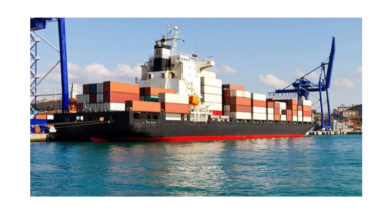Newspaper Industry; Is The Worst Over?
 The recent great recession was a baptism of fire for many industries and businesses. But some industries including newspaper paid a heftier price than others. Now that the recession is gradually receding
The recent great recession was a baptism of fire for many industries and businesses. But some industries including newspaper paid a heftier price than others. Now that the recession is gradually receding
(albeit with a snail pace), one wonders if things will ever get back to normal. Newspaper industry is still gripped with falling advertising revenues and dwindling readership. However there are signs that the tide might be turning.
Some Newspapers including New York Times are experiencing rise in revenues and share price. According to the Newspaper association of America while advertising revenue continues to decline—down 6% in 2012—several other categories of newspaper media revenue are now growing.
Circulation revenue grew 5% in 2012; while a host of new revenue sources not tied to conventional advertising and that barely existed a few years ago grew by 8%. These new revenue sources, which include such items as digital consulting for local business and e-commerce transactions, now account for close to one-in-ten dollars coming into newspaper media companies.
On the other hand many newspapers have increased their subscription rate and the price of news-stand copies. But the principal contributor that might change the fortune of newspapers is a concept called paywall. A paywall is a system that prevents Internet users from accessing webpage content without a paid subscription.
There are both “hard” and “soft” paywalls in use. “Hard” paywalls allow minimal to no access to content without subscription, while “soft” paywalls allow more flexibility in what users can view without subscribing, such as selective free content and/or a limited number of articles per month, or the sampling of several pages of a book or paragraphs of an article. Newspapers have been implementing paywalls on their websites to increase their revenue.
Many pundits had expressed their doubts regarding the success of this system, because they believe people who do get their dose of information from Internet are not used to pay for it. But newspapers are determined more than ever to charge for their content. Also the new paywall systems are cheaper and easier to install.
Many newspapers in US and to a lesser extent in Europe are using these systems. The popularity of tablets and smart phones are also helping newspapers generate more money. Many are downloading paid apps to read newspapers. But still the revenues coming from selling apps has not been able to compensate for the loss of advertising.
Future Technology
There is no doubt that in order for newspaper publishers to survive finding more innovative revenue generating systems is not enough. They have to reduce their production cost as well. Newspaper press manufacturers are addressing this need by introducing new and state-of- the –art press technology that not only can produce high quality newspapers but also a range of other printed materials including magazine, books, inserts, brochures and more.
The living proof of this new strategy is Goss Magnum Compact press which was launched for the first time during recently held China Print Exhibition. It is the world’s first single-width press with fully automated plate changing capability. Goss put on display a four-colour print module from the new Magnum Compact press in China Print.
The new technology received considerable attention from printers, publishers and print commentators. Goss International showcased unique automation, operability and cost advantages for newspaper, book and semi-commercial production through daily demonstrations to large crowds
The new Goss Magnum Compact press meets today’s growing demands for shorter runs, faster changeovers, lower production costs and high print quality, according to Goss marketing director Eric Bell. Autoplate fully automatic plate changing is standard, enabling extremely fast plate changes (30 seconds) at the press of a button.
“Additional automation and ease-of-use features can bring a new level of cost competitiveness to multi-product business models and allow the press to excel at traditional offset run lengths as well as ultra-short runs,” Bell explains. “Compact four-colour print modules that are just over two meters tall improve print quality and allow for installation into smaller buildings.”
KBA, another major manufacturer of newspaper press in the world is also offering a waterless solution to newspaper printers and publishers who are looking to open up new business lines. KBA’s compact Cortina press is equipped for printing high quality newspapers and semi commercial print work. The company will be delivering a brand new Cortina waterless press to Volksfreund-Druckerei Nikolaus Koch in Trier, Germany. This particular press embodies company’s strategy for flexible printing operation.
The double-width KBA Cortina will be engineered with a 510mm (20.1in) cut-off, a maximum web width of 1,400mm (55.1in), an output of 85,000 copies per hour and the ability to produce up to 32 broadsheet and 64 tabloid pages in full colours.
Along with two Pastomat reelstands with Patras. An automatic reel handling and a stripping station.
The press also features two compact four-high towers, a KF 5 folder and two coaters. Since it will be configured as a floor-mounted press with keyless inking units it minimises the number of operators needed. Automatic and infinitely variable web width adjustment, e.g. when using full-width webs between 1,200 and 1,400mm (47.2-55.1in), and automatic plate changing with KBA PlateTronic ensure fast job changes. Pagination changes can be initiated automatically from the console cutting makeready times when production entails frequent copy thickness changes.
The two coaters for inline finishing of short- to medium-size print runs will be integrated above both printing towers. This option is only possible in waterless offset on the Cortina, simply needs an IR/hot-air drying aid and not a high energy heatset dryer. Water-based coating can be printed on both sides of the web in varying widths and products can be finished immediately.
The combination of using coated and non-coated webs is also possible as well as the use of normal and improved newsprint.
The customised superstructure will have two automatic double turner bars, a folder superstructure with three formers and a skip slitter for a wide range of products. Additional features allow printed products to be glued, stitched or perforated. Other capabilities support the production of ad specials, such as four-page centre spreads or half covers.
 The Cortina will be controlled from an ErgoTronic console incorporating KBA PressNet production scheduling and press presetting system with KBA EasyStart for automatic press start-up and EasyClean-up for automatic run-down.
The Cortina will be controlled from an ErgoTronic console incorporating KBA PressNet production scheduling and press presetting system with KBA EasyStart for automatic press start-up and EasyClean-up for automatic run-down.
In addition, the press will feature KBA-MaintainSoft maintenance software. Automatic colour and cut-off register controls, CleanTronic cylinder washing systems and further features ensure a high printing and folding quality with minimal waste. Gulf News has also purchased a Cortina press. The machine is up and running. It’s the first Cortina sold outside Europe.
Manroland Web Systems, another giant German web press manufacturer is also offering its version of future proof web machine. Manroland’s solution is called Colorman e: line. According to Manroland the ability to respond to changing market requirements at any time – that is the basic principle of the new COLORMAN e:line in blanket-to-blanket design. Manroland calls its solution futureproof. It comes with different packages including Commercial Package, Automation Package and Speed Package.
Manroland claims the press operating concept transforms the operator into a pilot who monitors all production processes from a central touch screen. The clear layout of the autoprint menu gives the operator perfect control over his own commands as well as the press status.
The Commercial Package: This option is available for the production of magazine-like products. It includes a commercial inking unit as well as integrated control systems.
The Automation Package: Manroland offers a customized degree of automation that can be retrofitted for greater run length flexibility, better planning efficiency, and less waste. Fully equipped systems feature automated paper logistics, plate transport and changes, modifications to press presettings, and production run quality control. Also to keep the cost low Manroland is introducing a number of additional features and solutions including MAINSYS maintenance solutions that support and document activities. On the other hand the bearer-free design, IROLOC roller supports, and energy-saving, water cooled motors increase efficiency.





